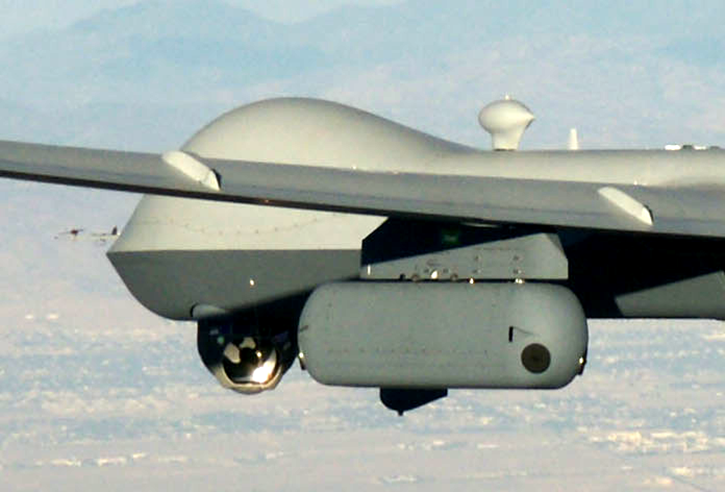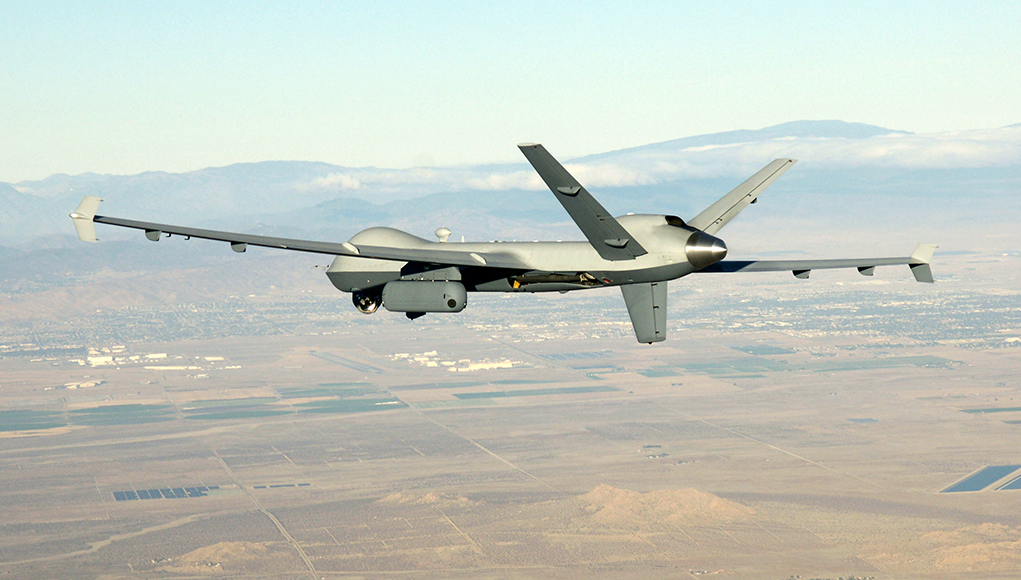For more than two decade unmanned aerial systems (UAS) operated by the U.S. armed forces are used mainly in asymmetric warfare, against irregular forces that do not pose serious threats to U.S. airpower. But in recent years the situation has changed. Irregular forces in many theaters are equipped with air defense assets. In many theaters missions are already flown in airspaces dominated by potentially hostile radars and air defenses. In the South China Sea, the Korean Peninsula, Yemen, Iraq and Syria, such environments would limit the usability of conventional drones, unless suitable mission systems and countermeasures are deployed.
General Atomics Aeronautical Systems, Inc. (GA‑ASI) has recently demonstrated such a system by equipping their B/MQ-9 Reaper Block 5 equipped with a Radar Warning Receiver (RWR). The test was part of an airborne demonstration of the drone’s capability to operate on the edge of ‘contested airspace’ – areas defended by surface to air missile systems (SAM). For the recent test, the company owned Reaper drone carried a standard pod equipped with Raytheon ALR-69A RWR. This sensor provides enhanced situational awareness to aircrew and air element command and control units by identifying potential radar threats in or near contested airspace environments.
The ALR-69A is often used as a sensor for self-protection systems, that consist of chaff and flare dispensers, jammers and decoys, but the recent tests on the Reaper employed the RWR as a sensor that detects and alerts operators on hostile radar activity in its operating airspace. Once the RWR spots a hostile radar it cues other onboard sensors (such as an SAR radar or EO/IR payload) to identify and designate it for the attack. The system can also operate in self-protection but this mode has not been tested.
During the recent tests, the system was operated in various flight profiles. According to GA-ASI, the pod was able to validate RWR performance which met or exceeded current thresholds for both air and ground radar threats. Additionally, the RWR information to the flight crew was deemed useful for triggering flight crew action, such as manually cross-cueing to other onboard sensors to validate threat information. GA-ASI plans further RWR demonstrations later in the year to include integrating with Link 16 communications datalink.

The current development of this new capability is conducted by the company as a private investment, with the goal of partnering with potential customers in the near future. “The successful demonstration of a mature radar warning receiver on our company-owned Predator B clearly shows the utility of the aircraft in conducting missions in the proximity of threat radars and enemy air defenses,” said Claudio Pereida, executive vice president, Mission Systems, GA-ASI. “We are pleased to be the first company to demonstrate this capability on a remotely piloted aircraft and hope to make it available to interested customers on a quick-reaction basis.”
“The ALR-69A provides improved detection range and accurate, unambiguous identification in dense signal environments,” Paul Overstreet, ALR-69A program manager, Raytheon added. “Its open architecture is what allows it to operate on manned or unmanned aircraft.”




















